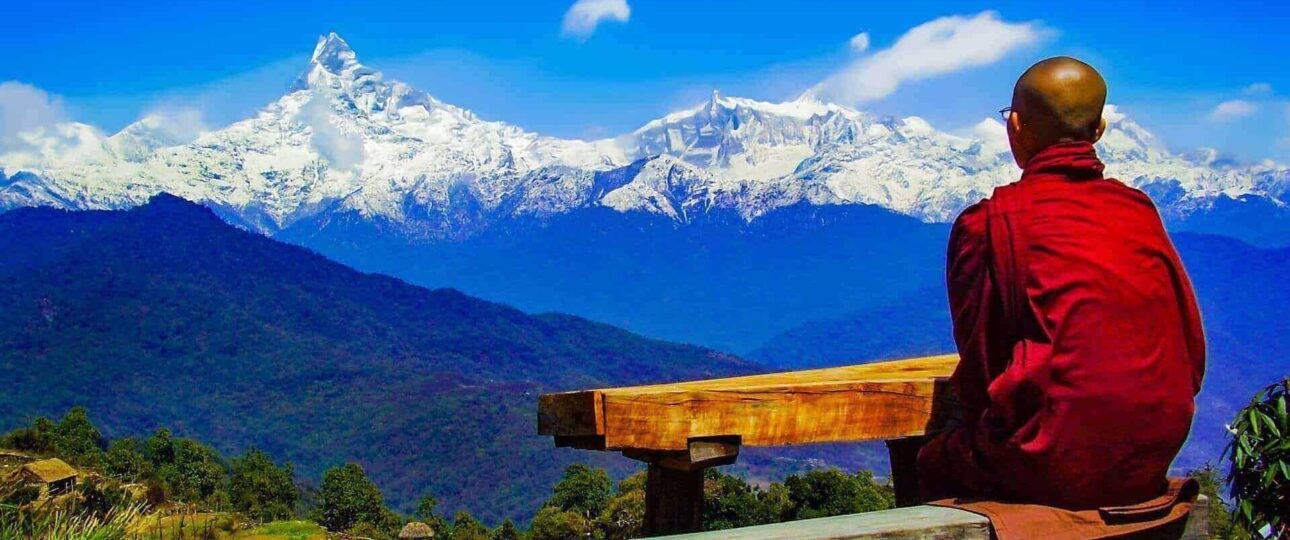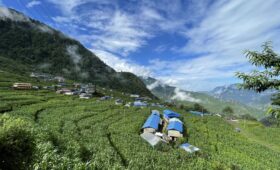Nepal, a land of breathtaking landscapes, vibrant culture, and towering Himalayan peaks, is a dream destination for many travelers. Choosing the best time to visit Nepal can significantly enhance your experience, whether you’re trekking in the mountains, exploring cultural heritage sites, or immersing yourself in local festivals. This guide will delve into the optimal times to visit Nepal, focusing on weather, events, and activities to help you plan your perfect trip.
Spring (March to May)
Weather and Climate: Spring is one of the best times to visit Nepal. During this season, the weather is generally warm and pleasant, with temperatures ranging from 16°C to 23°C (61°F to 73°F) in the Kathmandu Valley. The lower elevations experience mild temperatures, while higher altitudes like Everest Base Camp can be colder, but still bearable for trekkers.
Trekking and Activities: Spring is an excellent time for trekking in Nepal. The trails are adorned with blooming rhododendrons and other wildflowers, creating a vibrant and colorful landscape. Popular treks such as the Annapurna Circuit, Langtang Valley, and Everest Base Camp are bustling with trekkers enjoying the clear skies and stunning mountain views.
Festivals: Spring is also a festive season in Nepal. Holi, the festival of colors, is celebrated with much enthusiasm in March. It’s a lively time to be in Nepal, with locals and tourists participating in the festivities. Another significant festival is the Nepali New Year (Bisket Jatra), which falls in April and is celebrated with various cultural events and parades.
Summer/Monsoon (June to August)
Weather and Climate: Summer in Nepal coincides with the monsoon season, characterized by heavy rainfall, high humidity, and warm temperatures ranging from 20°C to 30°C (68°F to 86°F) in the lower regions. The monsoon rains are heaviest in July and August, making travel in the mountains challenging due to slippery trails and the risk of landslides.
Trekking and Activities: While trekking during the monsoon season can be risky, certain regions like Mustang and Dolpo, which lie in the rain shadow of the Himalayas, remain relatively dry and are excellent trekking destinations. The lush, green landscapes and fewer tourists can make for a unique and serene trekking experience.
Festivals: The monsoon season is marked by several important festivals. One of the most significant is Teej, a Hindu festival celebrated by women with fasting, dancing, and singing. The festival of Janai Purnima, also known as Raksha Bandhan, involves religious rituals and the tying of sacred threads.
Autumn (September to November)
Weather and Climate: Autumn is considered the best time to visit Nepal. The weather is stable and clear, with temperatures ranging from 10°C to 25°C (50°F to 77°F) in the lower regions and colder temperatures at higher elevations. The post-monsoon period leaves the air crisp and clean, offering stunning views of the Himalayas.
Trekking and Activities: Autumn is peak trekking season in Nepal. The popular trails, including Everest Base Camp, Annapurna Circuit, and Manaslu Circuit, are crowded with trekkers taking advantage of the perfect weather and breathtaking mountain vistas. It’s also an ideal time for other outdoor activities such as rafting, paragliding, and jungle safaris.
Festivals: Autumn is a vibrant festival season in Nepal. Dashain, the longest and most significant Hindu festival, is celebrated in October with family gatherings, feasts, and religious rituals. Tihar, also known as the festival of lights, follows Dashain and includes the worship of animals, lighting oil lamps, and vibrant decorations.
Winter (December to February)
Weather and Climate: Winter in Nepal is characterized by cold temperatures, especially in the mountains, with daytime temperatures ranging from 2°C to 15°C (36°F to 59°F) in Kathmandu. Higher elevations can drop well below freezing, making trekking in these areas more challenging.
Trekking and Activities: While winter is not the most popular trekking season, it does offer unique opportunities for those prepared for the cold. Lower elevation treks like the Ghorepani Poon Hill and Chitwan National Park are more manageable during this time. The clear skies and stunning visibility can make for incredible mountain views, and the trails are less crowded.
Festivals: The winter season hosts several important festivals. One of the major festivals is Maha Shivaratri, dedicated to Lord Shiva, marked by fasting and all-night vigils at Pashupatinath Temple. Another significant event is the Tibetan New Year, Losar, celebrated with traditional songs, dances, and feasts, especially in Tibetan Buddhist communities.
Choosing the Best Time Based on Activities
- Trekking: For trekking, spring (March to May) and autumn (September to November) are the best seasons. These periods offer stable weather, clear skies, and optimal trail conditions.
- Cultural Exploration: If your focus is on cultural exploration and festivals, visiting during major festivals like Dashain, Tihar, or Holi can provide a rich cultural experience.
- Wildlife and Nature: For wildlife enthusiasts, visiting Chitwan National Park or Bardia National Park during the winter months (December to February) is ideal, as the temperatures are milder and the chance of spotting wildlife is higher.
- Adventure Sports: For activities like white-water rafting, paragliding, and mountain biking, autumn and spring provide the best conditions.
Conclusion
Nepal is a year-round destination, each season offering its own unique charm and experiences. Whether you’re an avid trekker, a culture enthusiast, or an adventure seeker, understanding the seasonal variations will help you make the most of your visit.
Spring and autumn stand out as the most favorable times for trekking and outdoor activities, with their stable weather and vibrant landscapes. Summer, despite its monsoon challenges, offers lush greenery and fewer crowds in certain regions. Winter, with its serene environment and clear skies, provides a peaceful and less crowded trekking experience for those prepared for the cold.
No matter when you choose to visit Nepal, the country’s majestic mountains, rich cultural heritage, and warm hospitality will leave you with unforgettable memories. Plan according to your interests and preferences, and Nepal will undoubtedly offer an adventure of a lifetime.


